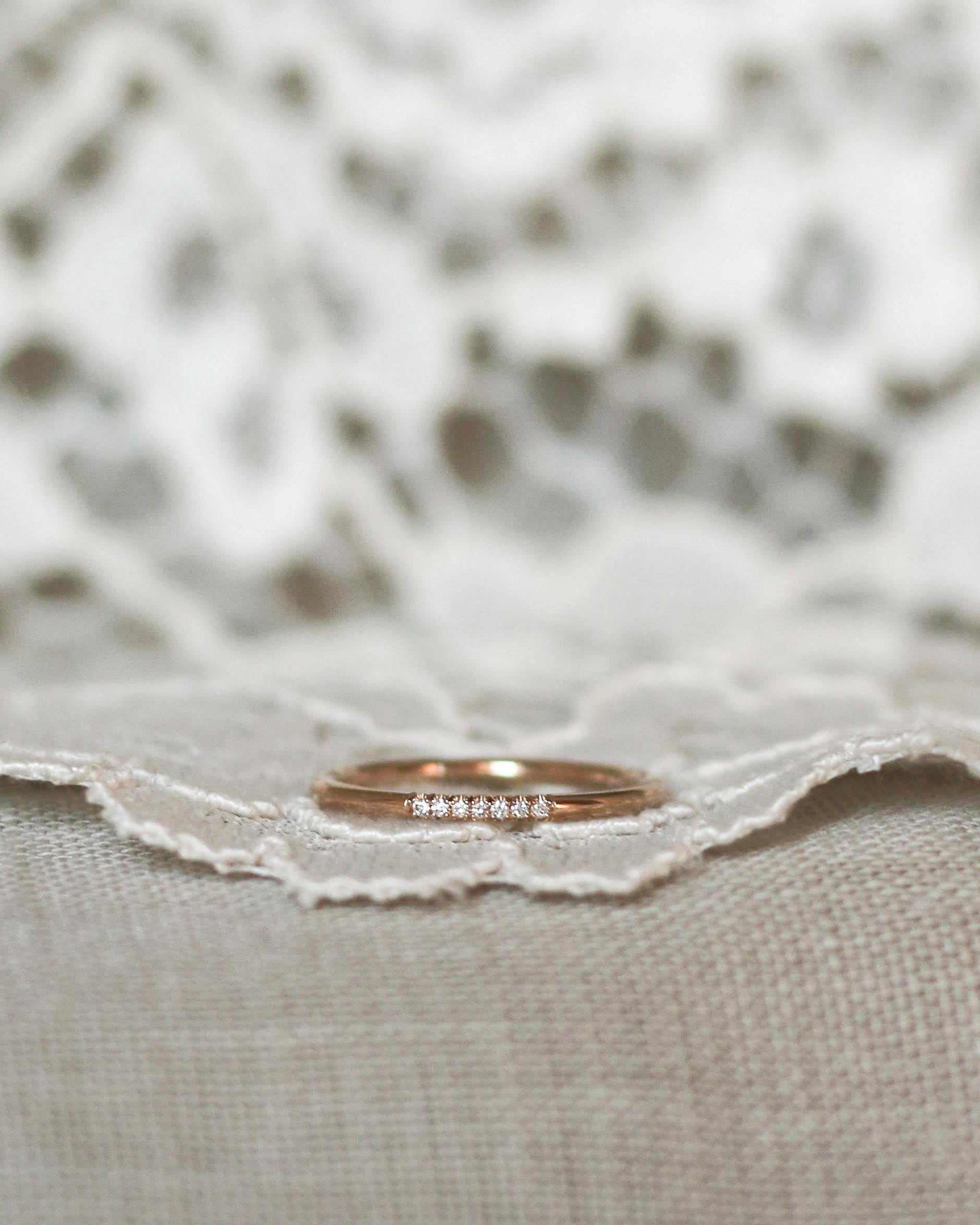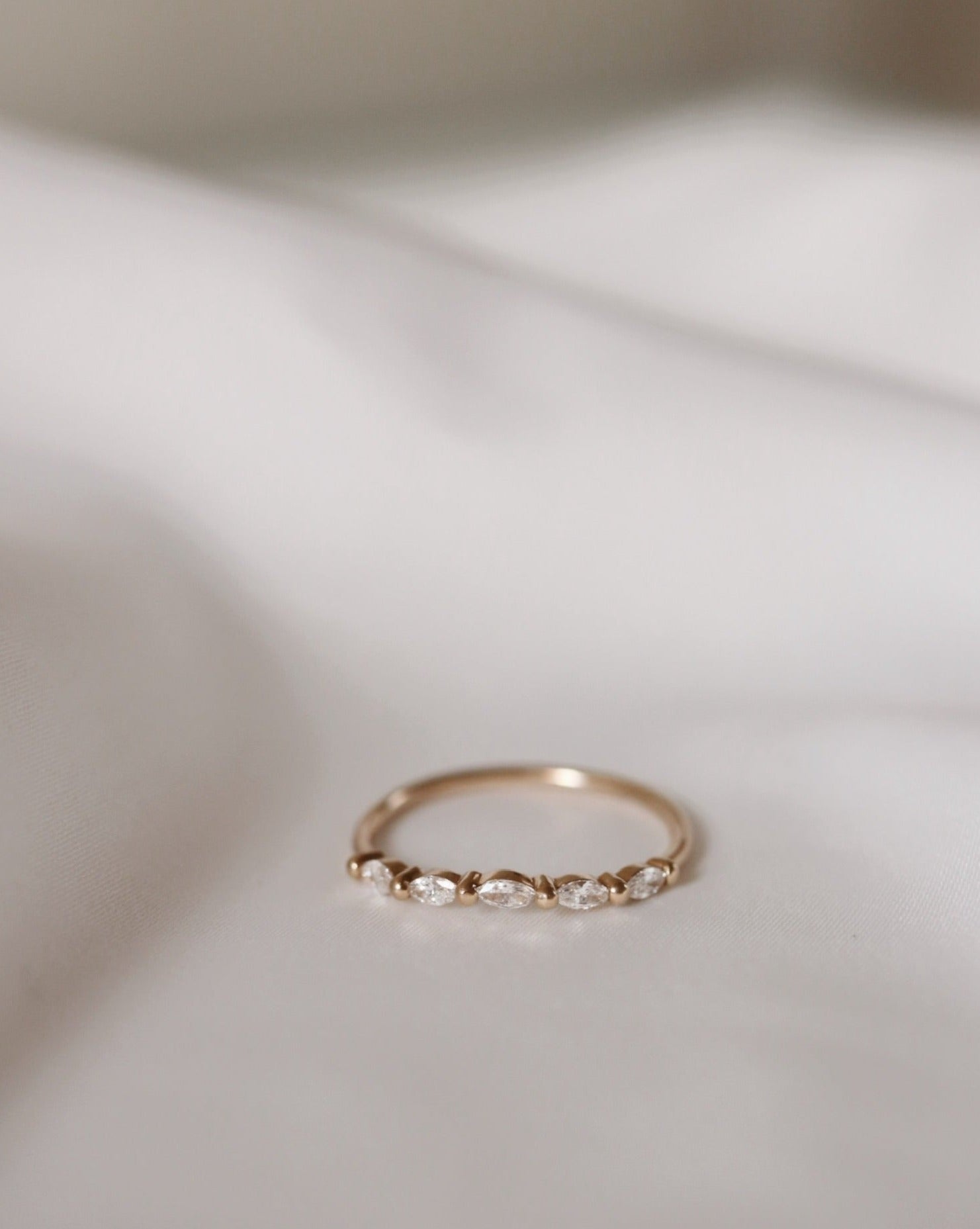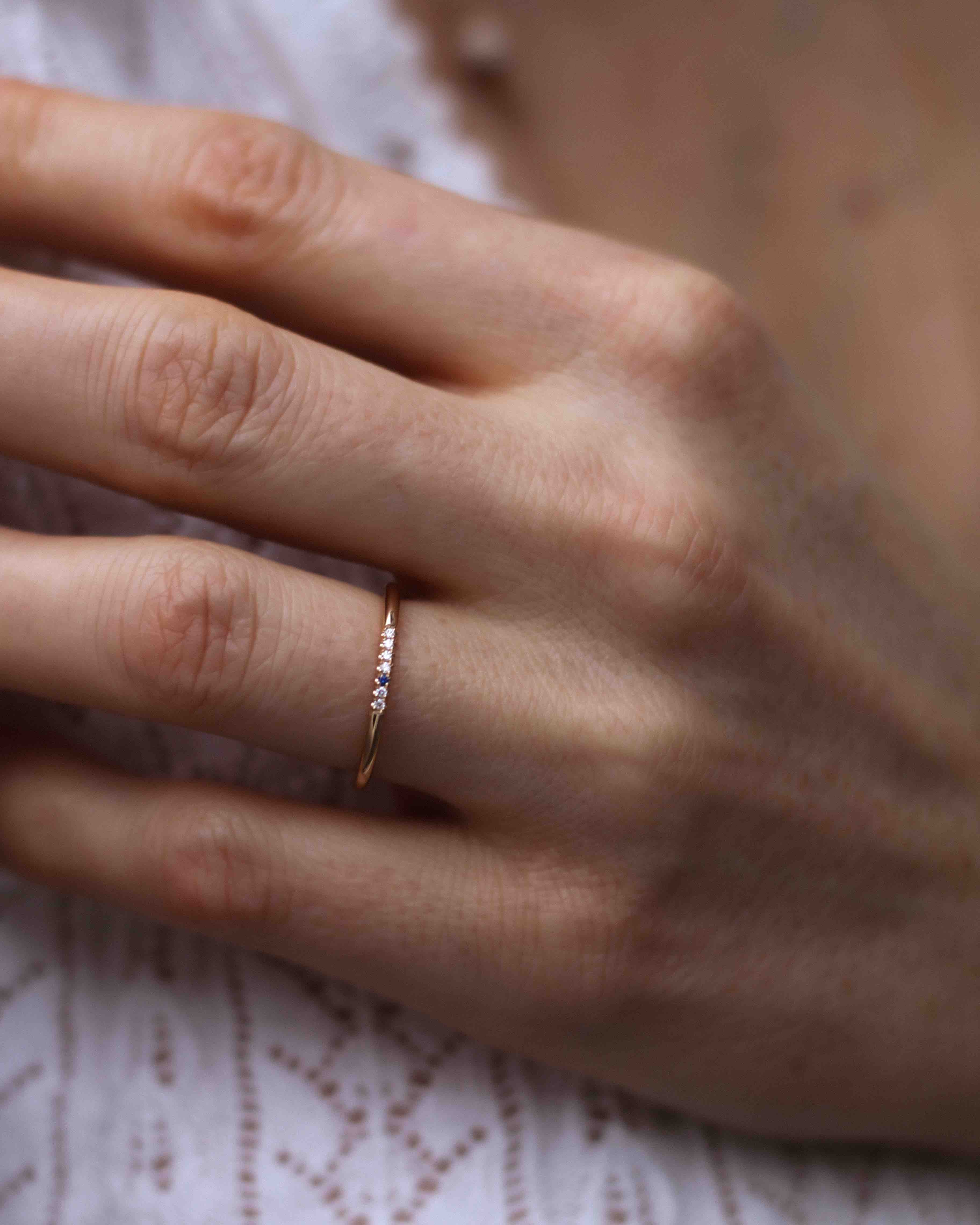If you've ever considered an antique diamond, also called an old cut diamond, in your next piece of jewelry - look here! The antique diamonds were cut by hand and adjusted to sparkle most beautifully in the light available at the time - the candle. This gave them a completely unique charm that cannot be compared with today's perfectly cut diamonds. All natural diamonds are billions of years old - but if they were cut before 1940, they are called antique, or old-cut diamonds. Let's go over the differences from modern cut diamonds. Written by: Cecilia Kores
2. They were hand cut with the eyes as a yardstick - each stone is unique

Trinity ring with antique diamonds in old mine cut (Old Mine Cut), and mixed rings with olive green sapphires and diamonds. All MumbaiStockholm
3. Fewer choices - but the stone can shineHow is it that there are so few different antique grindings?
The appearance of the antique cut diamonds is simply a result of only having access to simple tools, and largely following the natural shape of the diamond crystal as a guide. Because diamonds were rare, they wanted to keep as much material as possible - and that was the cut known as the Old Mine Cut, which was square with gently rounded sides.
The development of diamond grinding has largely followed the industrial revolution. Until 1890, diamonds were mainly cut in a single form - Old Mine Cut. From the 18th century and the next 200 years, it was by far the most common type of grinding. But at the same time as the industrial revolution really made its entrance, at the turn of the century 1800-1900, the first large diamond deposits were found outside of India - in South Africa. Suddenly diamonds weren't so rare anymore, and people could afford to start experimenting with the new grinding tools that had arrived! In 1875, the first diamond lathe was invented, and it was now possible to continuously grind round stones.
So thanks to being able to start "wasting" the diamond crystal, grinding away more material and getting a round, sparkling cut, the Old European Cut was invented.
The "new" diamonds found in South Africa were primarily cut in this round shape - and probably the cut got its name from the fact that most of the diamond companies operating in South Africa were founded by Europeans. The old cushion cut, in which the Indian stones had been cut, was then named "Old Mine Cut" - old mine cut.
The Old European Cut was then the most popular cut until the modern precision-cut brilliant completely took over among the round cuts after 1940.
It was a 23-year-old mathematician in Belgium, Marcel Tolkowsky, who worked out the exact angles and facets that maximized the brilliance and light reflection of a diamond - and it was named brilliant cut. The thesis that he presented was published in 1919 - but it took another 20 years until brilliant grinding took hold.
The cool thing about antique diamonds is that by looking at the shape, you can tell how old it is: the cushion cut, the old mine cut, is the oldest cut used in modern jewelry and can be up to 300 years old (since the 18th century). While the Old European Cut was only cut for a relatively short period - between 1890-1940 - after that the precision cut brilliant cut beat out all the competition.

Mixed rings with diamonds, sea green tourmaline, dark blue sapphires and on the far right a trinity ring with an antique diamond. All jewelery Mumbaistockholm
4. Antique diamonds are sold without a certificate
As a rule, antique diamonds are sold without certificates (securities from appraisal institutes that assess the four Cs: carat, clarity, cut and color). One reason is that the antique diamonds were cut long before the GIA and other laboratories began grading stones (the first GIA diamond certificate was issued in 1953). You could of course submit the loose stones for grading today, before selling them on, but it is not considered worthwhile - simply because antique diamonds rarely hit very high on any of the C's anyway! So you don't have to chase the "perfect" certificate.
5. Choose an old cut diamond if you want a big stone on a small budget
Perhaps one of the great things about antique diamonds is precisely that they don't hit high on the four C's - because that means you can get a large stone for a much more affordable budget than modern cut diamonds! It is not unusual to have beautiful antique diamonds in a color as low as K, L or M. I personally suspect that the price of antique diamonds will go up as the demand increases, so act now! Choose an antique diamond if you want a big, beautiful stone that won't leave you bare-scratched.
Rings are best worn on one hand. Jewelery Mumbaistockholm
6. The fifth C: Charm
Antique diamonds have neither perfect color, clarity nor cut, and often come in odd carats (because you couldn't precision cut a certain carat). Therefore, when choosing an antique diamond, you should take the fifth C into account - Charm.
7. Guaranteed conflict-free
Antique diamonds are guaranteed to be conflict-free, as the conflicts in question (and which form the basis of the Kimberley Process) were African civil wars that came much later - in the 1990s.8. Environmental impact
Perhaps one of the most important reasons why many choose an antique diamond in their jewelry. The antique diamond is the diamond that leaves the least impact on the environment. The only new resource it has claimed is the shipping from its place of origin. It can be compared to natural diamond mining or the huge carbon dioxide emissions made by the synthetic diamond industry.

Mixed jewelry with tourmalines, diamonds and antique diamonds, from Mumbaistockholm
It sure is exciting! You may not have become an antiques expert just by reading this article, but surely antique diamonds are exciting? At the same time as you realize what a craft it is even today to produce the various modern forms of diamond.
There is a piece of jewelry for every grind - and I think you should choose the grind that speaks to you the most.
I should also mention that there is another incredibly old grinding that can be found in antique jewelry at, for example, Kaplan's, Bukowski's and Ribbhagen in Stockholm - and that is the rose grinding. It is a very simple, angular cut that follows the shape of the raw diamond crystal. It was popular until the 17th century, when more grinds were developed.
If you want to learn more about gemstone cuts and the old antique cuts, I recommend you listen to episode 34 of the Jewelry Podcast!

Lyssna på Avsnitt 34: Slipningsskolan! Den gnistrande briljanten, majestätiska prinsessen, lyxiga asscherslipningen och de charmiga antikdiamanterna of Smkykespodden directly below or click here .
Pin and save:



































































Leave a comment